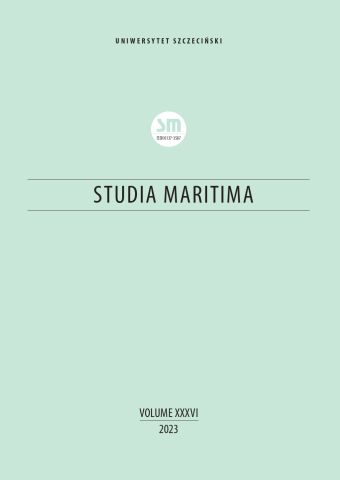






| Autorzy: |
Cezary
Stępniak

Department of Information Management Systems Czestochowa University of Technology |
| Słowa kluczowe: | RBSC mapy miast zarządzanie miastami nadmorskimi narzędzia ICT i Internetu wszystkiego SmartCity dane przestrzenne |
| Data publikacji całości: | 2023 |
| Liczba stron: | 17 (181-197) |
| 1. | A Guide for Smart Communities: Using GIS Technology for Local Government Management. ICMA ESRI Washington 2018. Accessed 5 June 2023. https://icma.org/ sites/default/files/18-137%20GIS%20e-Primer%20Report_final.pdf. |
| 2. | Balasubramani, Booma Sowkarthiga, Mohamed Badhrudeen, Sybil Derrible, and Isabel F Cruz. “Smart Data Management of Urban Infrastructure Using Geographic Information Systems.” Journal of Infrastructure Systems 26 (2020), 4: 06020002. Accessed 5 June 2023. DOI: 10.1061/(ASCE)IS.1943-555X.0000582. |
| 3. | Díaz-Díaz, Raimundo, Luis Muñoz, and Daniel Pérez-González. “The business model evaluation tool for smart cities: application to SmartSantander use cases.” Energies 10 (2017), 3: 262. Accessed 5 June 2023. DOI: 10.3390/en10030262. |
| 4. | Enders, Martin, and Nadja Hoßbach. “Dimensions of digital twin applications-a literature review.” Proceedings of the 25th Americas Conference on Information Systems, AMCIS 4 (2019): 2575–2584. |
| 5. | Gren, Ing-Marie, and Henrik Scharin. “Efficient management of eutrophic coastal zones in theory and practice: An application on nitrogen reduction to the Stockholm archipelago.” Regional Environmental Change 7 (March 2007), 1: 27–35. Accessed 7 June 2023. DOI:10.1007/s10113-007-0023-7. |
| 6. | Hoyle, Brian. “The redevelopment of derelict port areas.” The Dock & Harbour Authority 887 (1998): 46–49. |
| 7. | Jelonek, Dorota, Cezary Stępniak, and Tomasz Turek. “The Concept of Building Regional Business Spatial Community.” Proceedings of 4th International Conference on Data Communication Networking (2013): 83–90. 10th International Joint Conference on e-Business and Telecommunications, 29–31 July 2013. Accessed 7 June 2023. |
| 8. | DOI: 10.5220/0004531700830090. |
| 9. | Jelonek Dorota, Cezary Stępniak, and Tomasz Turek. “Barriers in Creating Regional Business Spatial Community.” Annals of Computer Science and Information Systems 2 (2014): 1243–1250. Proceedings of the 2014 Federated Conference on Computer Science and Information Systems. September 7–10, 2014, Warsaw, Poland. Accessed 5 June 2023. DOI: 10.15439/978-83-60810-58-3. |
| 10. | Li, Wenwen, Michael J. Batty, Michael F.Goodchild. “Real-time GIS for Smart Cities.” International Journal of Geographical Information Science 34 (2020), 2: 311–324. Accessed 7 June 2023. DOI: 10.1080/13658816.2019.1673397. |
| 11. | Ma, Yan, and Zhenjiang Shen. Strategic Spatial Planning Support System for Sustainable Development: Agent-Based Modelling and Simulation. Cham, Switzerland: Springer Cham, 2022. |
| 12. | McLeod, Sam, Jan Scheurer, and Carey Curtis. “Urban public transport: planning principles and emerging practice.” Journal of Planning Literature 32 (2017): 223–239. Accessed 8 June 2023. DOI: 10.1177/0885412217693570. |
| 13. | Patnaik, Srikanta, Siddhartha Sen, and Sudeshna Ghosh, eds. Smart Cities and Smart Communities. Empowering Citizens through Intelligent Technologies. Singapore: Springer Verlag, 29 May 2022. |
| 14. | Qian, Cheng, Xing Liu, Colin Ripley, Mian Qian, Fan Liang, and Wei Yu. “Digital Twin— Cyber Replica of Physical Things: Architecture, Applications and Future Research Directions.” Future Internet 14 (2022), 64: 1–25. Accessed 7 June 2023. DOI: 10.1080/13658816.2019.1673397. |
| 15. | Rosendo, Sergio, Louis Celliers, and Micas Mechisso. “Doing more with the same: A reality-check on the ability of local government to implement Integrated Coastal Management for climate change adaptation.” Marine Policy 87 (January 2018): 29–39. Accessed 7 June 2023. DOI: 10.1016/j.marpol.2017.10.001. |
| 16. | Sisman, Suleyman, and Arif Çaǧdaş Aydinoglu. “Using GIS-based multi-criteria decision analysis techniques in the smart cities.” International Archives of the Photogrammetry, Remote Sensing and Spatial Information Sciences – ISPRS Archives 44 (2020), 4/W3: 383–389. Accessed 7 June 2023. https://doi.org/10.5194/isprs-archives-XLIV-4-W3-2020-383-2020 |
| 17. | Stepniak, Cezary. “Wybrane aspekty zastosowania geograficznych systemów informatycznych w przedsiębiorstwach dostarczających media.” Zeszyty Naukowe Uniwersytetu Szczecińskiego 762, Ekonomiczne Problemy Usług, 104 (2013), 1: 407–415. |
| 18. | Stępniak, Cezary, Dorota Jelonek, Magdalena Wyrwicka, and Iwona Chomiak-Orsa, “Integration of the Infrastructure of Systems Used in Smart Cities for the Planning of Transport and Communication Systems in Cites.” Energies 14 (2021), 11: 3069. Accessed 8 June 2023. DOI: 10.3390/en14113069. |
| 19. | Toma, Sorin-George, Andreea Saseanu. “The world’s smartest cities in the metropolitan century.” Ovidius University Annals, Economic Sciences Series 18 (2018), 1: 111–116. |
| 20. | Turek, Tomasz, and Cezary Stępniak. “Areas of integration of GIS technology and smart city tools. Research findings.” Procedia Computer Science 192 (2021): 4681–4690. Accessed 8 June 2023. DOI: 10.1016/j.procs.2021.09.246. |
| 21. | Turek, Tomasz, and Cezary Stepniak. “Barriers to the Application of Spatial Information Systems in the SmartCity Dynamic Management.” Procedia Computer Science 207 (2022): 4217–4226. Accessed 8 June 2023. DOI:10.1016/j.procs.2022.09.485. |
| 22. | Vaya, Dipesh, and Teena Hadpawat. “Internet of Everything (IoE): A New Era of IoT.” Lecture Notes in Electrical Engineering 570 (2020): 1–6. Accessed 7 June 2023. DOI: 10.1007/978-981-13-8715-9_1. |
| 23. | Vinod Kumar, T.M., ed. Smart Master Planning for Cities. Case Studies on Digital Innovations. Singapore: Springer Verlag, 22 July 2022. |